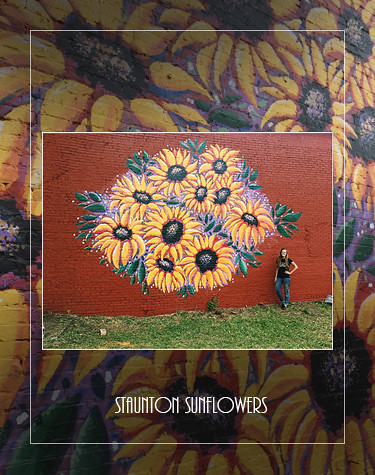
Volume XV, Issue X
Summer Filled with WONDER
By Bob Kirchman
Going into my bank, I had a pleasant surprise. The teller had noticed the mural being painted by our students and said that she had at first wondered if it had always been there. So many people had stopped by while it was being painted and were enthusiastic in their praise. Tim, at the drive in added that he had been walking by and had spoken with Madeline Mass as she painted that day. Amanda Riley’s vision to create a gift to the city of Staunton has come to amazing fruition and many a person’s daily commute has been brightened by the new mural. What started as an opportunity to give our students some large-scale experience has become a very large and very visible part of the fabric of our community!
Not only has this Summer involved muraling, but it has been my great joy to partner with Savhanna Herndon in offering programs for young artists! We are soon to put on a show of their work at Savhanna’s church. We have some amazing young people in the program and it will be so much fun to showcase their work!
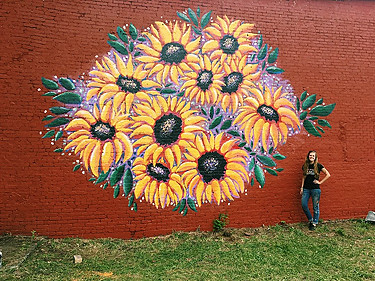
The Augusta Christian Educators (ACE) Co-Op of Augusta County, Virginia chose Madeline Maas's design for a mural to be painted in downtown Staunton. She completed it this Summer with help from her fellow studio art students. Photo by Bob Kirchman
More Mural Photos [click to view]
Art Program with Savhanna Herndon

Photo by Kimberly Herndon.
One of the greatest joys of this Summer was the art program for young people that Savhanna Herndon and I taught. We explored composition and color, made a lot of messes and found time to visit Natural Bridge with our students. We even found time to pose in front of the Staunton Sunflowers! Savhanna will be offering classes for students this Fall!
Natural Bridge
Once this Summer I was called upon to give the youth talk and I based it on this painting of Natural Bridge, or Mohomony, as the Monacans called it. To the Monacans it represents a great story of Divine deliverance as the bridge allowed them to defeat a much larger band of Powhatans. My message that evening was simply about remembering what God has done in your life. It is a simple truth, but it is a profound one.
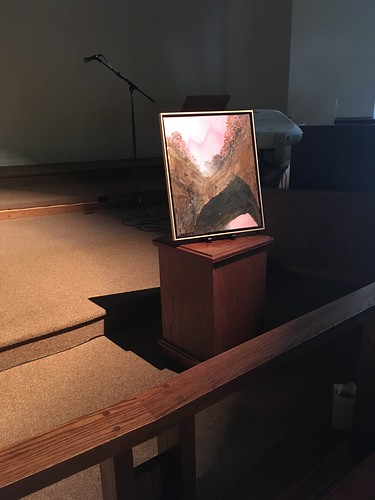

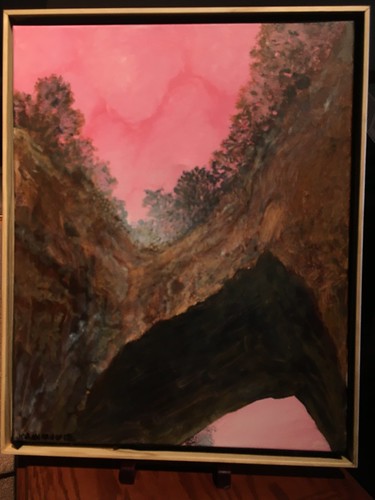
Photos by Bob Kirchman.
Capturing Light
My Talk at Natural Bridge
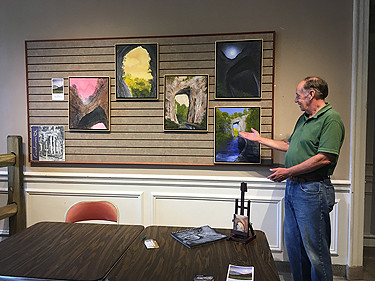
Walk about Zion, and go round about her: tell the towers thereof. Mark ye well her bulwarks, consider her palaces; that ye may tell it to the generation following. For this God is our God for ever and ever: he will be our guide even unto death.” – PSALM 48:12-14
I never tire of telling the story of Mohomony. That is what the Monacans called Virginia’s Natural Bridge. In their legend they faced a much larger force of Powhatans and prevailed because the bridge narrowed the attacking forces. The Monacans, fighting for wives and children behind them, overcame a much more powerful attacking force because they met them atop the bridge where an equal number of warriors faced them at any given time; constrained by the width of the bridge.
No doubt, the Monacans who fought in that battle would show young people the Natural Bridge and recount the wonder of Mohomony for them. This would be to them a story of Divine Deliverance just as the youth of Jerusalem would be encouraged to take note of their own history of Divine Deliverance. PSALM 48 ends with just such a charge!
I am giving a talk on the inspiration for my paintings at Natural Bridge. Part of it is a workshop for children where I give them black paper and white charcoal. I encourage them to look up at the bridge and remember the story. Then I guide them in drawing the light. It is fun to watch them draw light instead of just dark lines on white paper.
One little girl from South Carolina was particularly inspired by the project. She was seven years old and her mother proudly showed me some phone pictures of her work. She wanted to give me her capture of the bridge but I insisted that she give it to her mom and I would take a picture of it for myself! There are a few souls who’s IMAGO DEI extends to very early expression in art. I told her mom that she had a great treasure. Cherish her well!
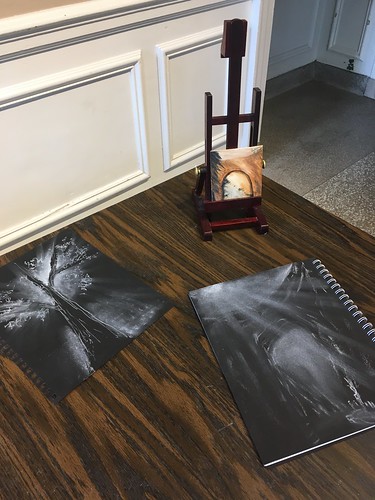
Here are my examples of 'Capturing Light' along with a painting by Savhanna Herndon for inspiration.
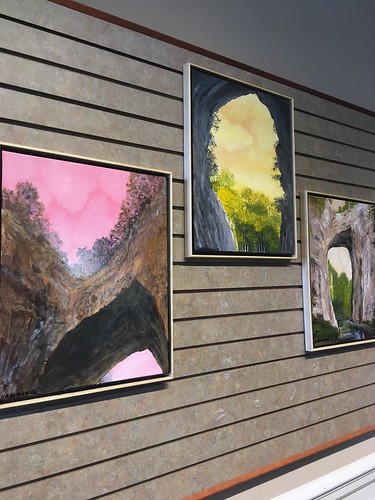
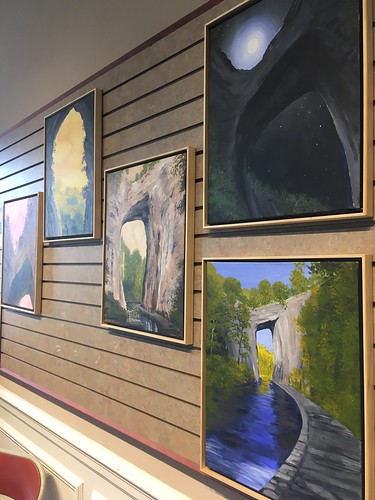
Demonstration of 'Capturing Light.' Photos by Bob Kirchman.
Mohomony
Natural Bridge as Seen from Below
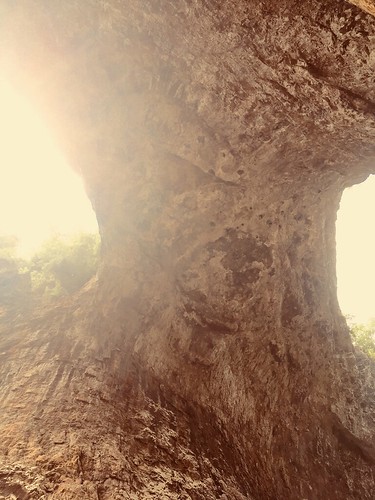
Looking straight up at Mohomony from Cedar Creek.
Photo by Bob Kirchman
Chesapeake and Ohio Bridge
Photo by Bob Kirchman
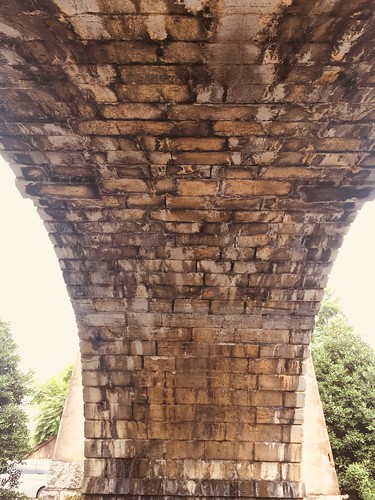
This arched stone bridge still carries rail traffic over Greenville Avenue. Photo by Bob Kirchman.
The Art of Design Communication
Design Seminar by Bob Kirchman in Charlotte, NC, Sept. 13
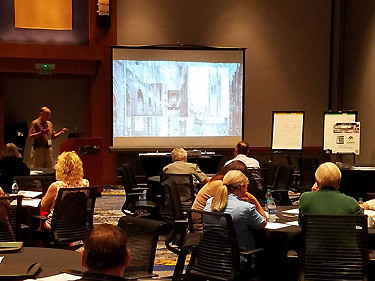
Here I am presenting 'The Art of Design Communication' at the American Institute of Building Design Summer Conference in Atlanta, Georgia last Summer. At this moment we are examining the beautiful rendering style of Architect Julian Abele.
AIBD Photo.
In the Nineteenth Century, the German poet Heinrich Heine studied the Gothic Cathedrals of France, England and Germany. A friend asked him, “Why can we no longer build such majestic structures?” Heine answered, “In those days, men had convictions, whereas we moderns only have opinions, and something more is needed than an opinion to build a Gothic cathedral.” In our workshop we studied the drawings of Julian Abele, [1.] who did create such majestic structures in the Twentieth Century.
I will be presenting 'The Art of Design Communication' at the North Carolina Association of Homebuilders's Convention on September 13th 2018.
Note from Atlanta Workshop
We received this note from a participant in the AIBD Conference:
Thank you so much, Bob! Your work is amazing and the workshop gave me much better confidence in my ability to sketch my ideas for a client. I've been doing this a long time so you wouldn't think there would be a lack of confidence, but.... so it goes.” – JH
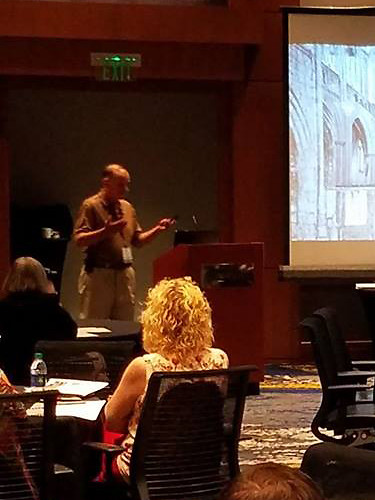
AIBD Photo.
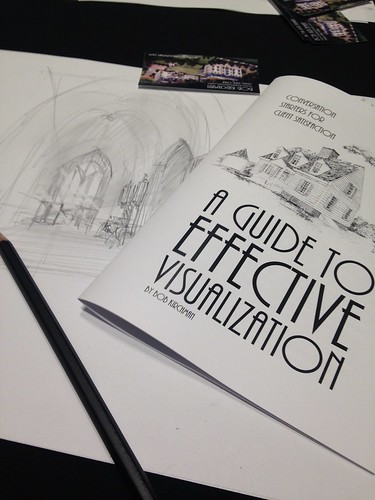
Workshop Materials. Photo by Bob Kirchman.
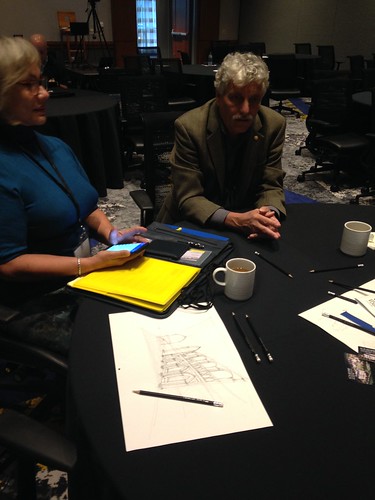
Participants in the workshop I presented at the American Institute of Building Design Summer Convention in Atlanta Georgia. Robert Browne of Cadworks Consulting, originally from Johannesburg, South Africa, especially enjoyed the drawing exercise in 'traditional media.'
New Echota, Cherokee Nation Capital
Photos by Bob Kirchman
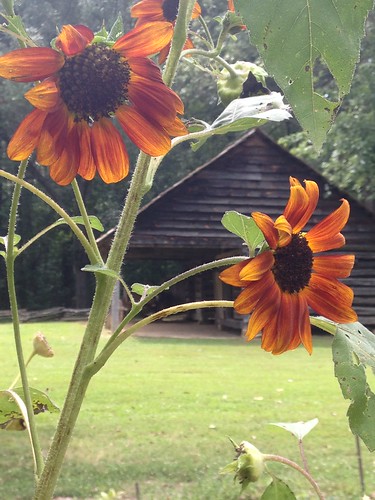
Many Cherokee farmers and their families were forced from small farms like this into stockades and eventually removed to Oklahoma in the 'Trail of Tears.'
Last Summer I traveled to Atlanta to present The Art of Design Communication and I took the opportunity to visit the capital of a great nation. Although this is last Summer’s trip, the memory is still fresh.
It is a warm August day as I travel to Atlanta Georgia through what was once the home of a great nation. Pulling off of Interstate 75, it is a short drive to the reconstructed capital of the Cherokee, New Echota. It was never a large city but it would swell to an encampment of hundreds of people when the council was in session.
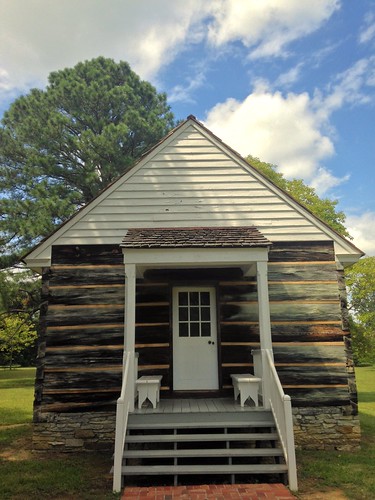
The offices of the Cherokee Nation's Phoenix, a newspaper published in both English and Cherokee.
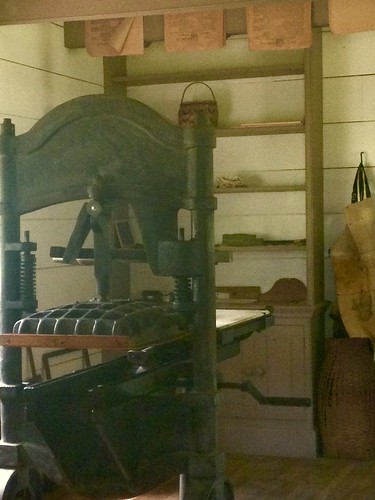
The Phoenix printing press.
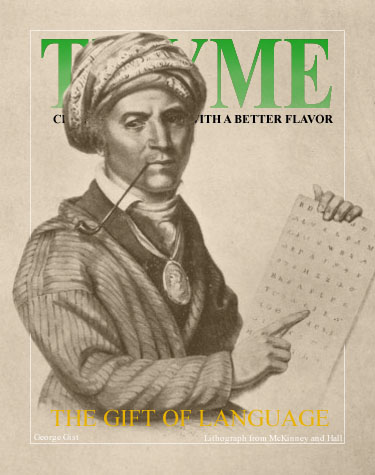
Sequoyah's 'Talking Leaves.'
The Gift of Language
How Sequoyah Gave His People Written Words
Perhaps the most remarkable man who has ever lived on Georgia soil was neither a politician, nor a soldier, nor an ecclesiastic, nor a scholar, but merely a Cherokee Indian of mixed blood. And strange to say, this Indian acquired permanent fame, neither expecting or seeking it." -- H. A. Scomp, Emory College
He was hardly someone you would predict would create such a significant contribution to his nation. George Gist was born to a Cherokee mother, Wu-teh, a member of the Paint Clan, and Nathanial Gist, an English fur trader near the village of Tushkeegee on the Tennessee River. The year was around 1760 but no one knows for sure. Learning the ways of the Cherokee, young George became a trapper and a fur trader himself. He would probably have lived out his days as a man of the forest, but he suffered a hunting accident (or possibly succumbed to a crippling disease, depending on which version of his story you read), but the young man was permanently disabled, unable to earn his living by the skills he had been taught in childhood.
George Gist developed a talent for metal working. He learned to be a blacksmith and silversmith. His disability became both a source of ridicule (Sequoyah means "pig's foot" in Cherokee) and a spur to greater things. The man was a good learner and became a competent craftsman. A man who purchased one of his pieces suggested that he sign his work, but he was unable to. He could not write! And here as well his story might have ended, but events in the greater world were to spur him to his greatest work. Sequoyah married a Cherokee woman and raised a family. They moved to Cherokee County in Georgia where George learned how to write his name from a local farmer. Later he joined other Cherokees who fought under Andrew Jackson against England in the War of 1812. Though he never learned to read or write English, Sequoyah was fascinated by the white man's ability to create "talking leaves" by making marks on paper.
As early as 1809, Sequoyah was exploring the creation of a Cherokee alphabet. Though scholars believe there may have once been a written Cherokee language that was later forgotten, there was no written Cherokee language when Sequoyah was a youth. People suspected that the white man's words "moved around on the paper," and the time was right for Cherokee to be able to read things for themselves. Cherokee soldiers could not write letters home, read military orders for themselves, or record events they wished to remember. When he returned home from the war, he worked in earnest on a phonetic alphabet of 86 letters to write the Cherokee Language. Sequoyah became something of a recluse. His friends and family ridiculed him. Some said he was insane or practicing witchcraft. Moving West to Arkansas, he continued his great work.
He found that his young daughter Ayoka could easily learn to use the syllabary and demonstrated this to his cousin, George Lowrey, who encouraged him to demonstrate the use of the syllabary to the public. In a Cherokee court case in Chattooga, he read an argument about a boundary line from a piece of paper. In 1821 the Cherokee Nation officially adopted Sequoya's alphabet and within a matter of months thousands of Cherokee learned to read and write! In 1824 the Cherokee National Council at New Echota, Georgia presented him with a silver medal. Sequoyah proudly wore it for the rest of his life. He was given a $300 annuity and his widow continued to receive it after he died.
By 1825 the Cherokee had the Bible in their own language along with hymnals and all sorts of educational materials. There was even a large group of Moravian Cherokee. Legal documents and books of every kind were available, all translated into the Cherokee Language. In 1827 The Cherokee National Council funded the printing of Tsa la gi Tsu lehesanunhi," the Cherokee Phoenix. It was the first Native American newspaper printed in the United States. It was produced in the Cherokee Capital, New Echota on a press shipped there from Boston. The paper had parallel columns in Cherokee and English, printed side by side.
Sadly, the discovery of gold in North Georgia, unscrupulous men and treachery in treaty would lead to the removal of most of the Eastern nation. Sequoyah moved to Oklahoma were he served as an envoy to Washington D.C. to assist the displaced Eastern Cherokees. He continued to serve his people as a diplomat and a statesman. Well into his eighties, he traveled West again, looking for a band of Cherokees who were said to have moved to Mexico. He took ill and died in 1843 and the location of his grave remains unknown to this day. Two species of giant redwood trees have been named in his honor, as has Sequoia National Park in California. He gave his people the gift of literacy. His contribution is unique, as he, an uneducated, seemingly undistinguished individual, created a totally new system of writing for his beloved nation.
Remembering History
After the residents of New Echota were taken away in the ‘Trail of Tears,’ the town itself disappeared. The state of Georgia had held a lottery to redistribute the land and it became farmland. The houses were taken down, save for that of Samuel Worcester, missionary to the Cherokee and Postmaster. It survived in other hands. The trees that shaded the streets were cut down. The town itself was but a memory.
In the 1960’s a group of people came together who thought it important to remember the great nation that had once occupied North Georgia. They persuaded the state of Georgia to create the present park at New Echota. The principle buildings have been reconstructed and stand in silent monument to those who were ripped from their land a century before.
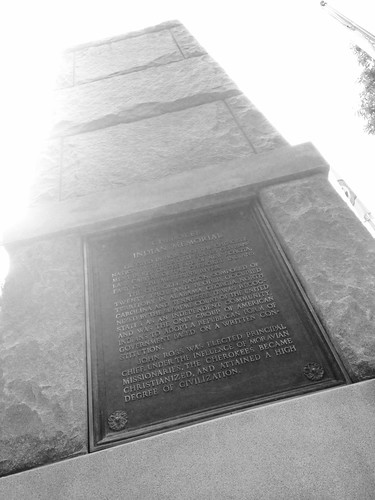
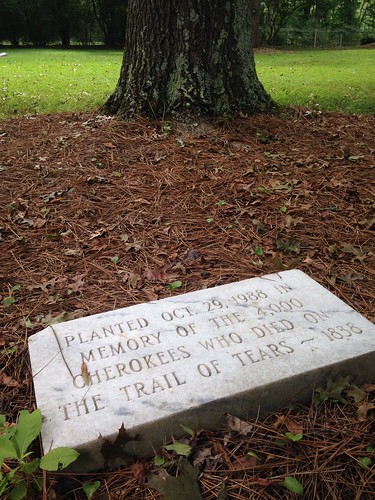
Forest, New Echota
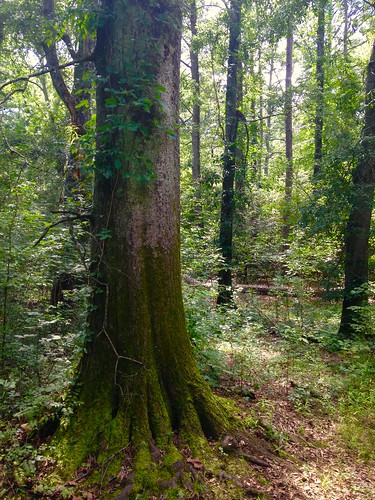
Although the area surrounding New Echota, the Cherokee Capital, was cleared for farmland after the Cherokee Removal, the forest has returned.
Photo by Bob Kirchman.
New Echota Houses of Government
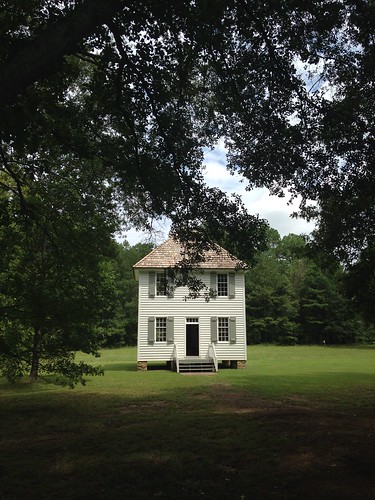
Reconstructed Supreme Courthouse. Photo by Bob Kirchman.
In 1825 New Echota was officially designated as the Cherokee Capital. The Council had been meeting in New Town (as New Echota was originally known), on the headwaters of the Oostanaula River, since 1819 and the Council house was built in 1822. Beginning in 1823, the Cherokee Supreme Court met annually to hear cases appealed from lower district courts. The Supreme Courthouse was constructed in 1829.
The government was set up similar to that of the United States, with a Legislative, Judicial and Executive Branch. The Council chose the Executive Branch officers, the Principle Chief, the Vice-Principal chief and the Treasurer.
Principal Chief John Ross, who's Cherokee name was Tsan-Usdi, and is also known as Koo-wi-s-gu-wi, the name of a mythological, or rare migratory bird; served in that capacity from 1828 to 1866. He led his people through the times of the Cherokee Removal and the Civil War. Although he was only 1/8 Cherokee, the son of a Scotch Father and a Cherokee mother, he was raised traditionally. The full-blooded Cherokee recognized his skills in dealing with the United States government and the settlers around them who wanted their land. He was a tireless advocate for his people, resisting the removal. His wife Quatie, mother of their five children, died on the ‘Trail of Tears.’
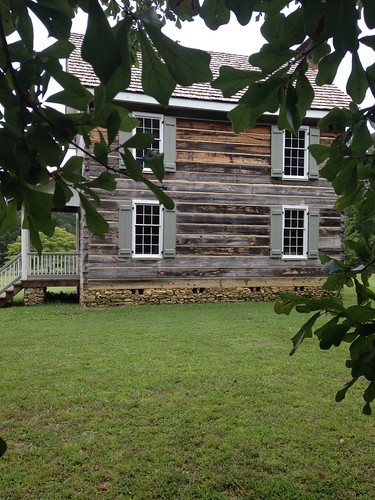
Council House. Photo by Bob Kirchman.
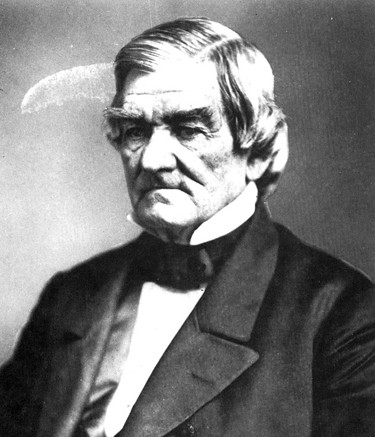
Principal Chief John Ross. Archives of the State of Georgia
Cherokee Portal
Painting by Bob Kirchman
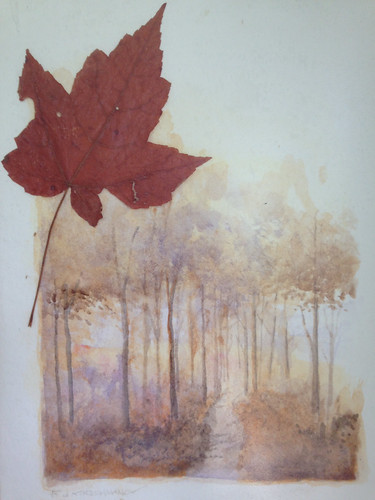
Cherokee Portal. Bob Kirchman 1998.
I painted this little watercolor nineteen years ago when I went to another conference in Georgia. On that trip I was able to go off in the mountains and had time to paint. It was a rainy day and I felt in the soft subdued light and mist like I had been transported to another time.
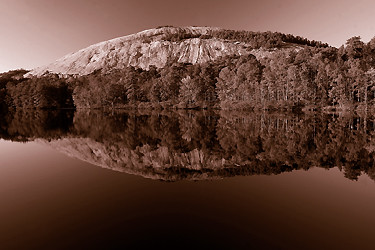
Stone Mountain, near present day Atlanta, was sacred to the Cherokees and the Creeks and the two nations used it as a meeting place.
New Echota, Cherokee Phoenix
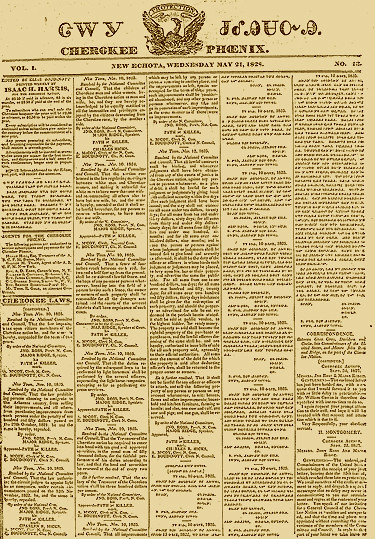
1828 Edition of the Cherokee Phoenix.
Sometime around 1809 a mixed-blood Cherokee known as Sequoyah began developing a written Cherokee language. In 1821 his work was complete. The language had 86 characters and was adopted by the Cherokee Council in 1826. In 1827 Rev. Samuel Worcester helped to establish the Phoenix Printing Office. Using specially forged type, the newspaper had side by side columns of English and Cherokee. It was distributed throughout the Cherokee Nation, the United States and even parts of Europe. In addition to the newspaper, the press also produced a Cherokee Bible, a hymnal and even a novel.
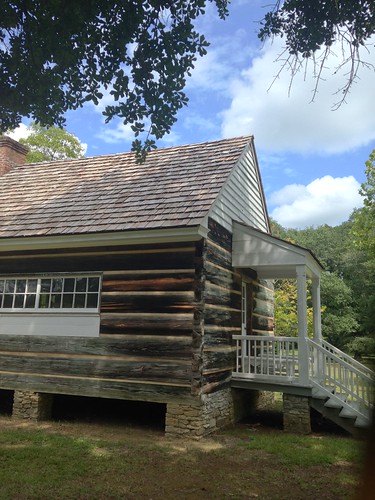
This simple printing office managed an international distribution of the Phoenix. Photo by Bob Kirchman.
New Echota, Vann Tavern
Photos by Bob Kirchman
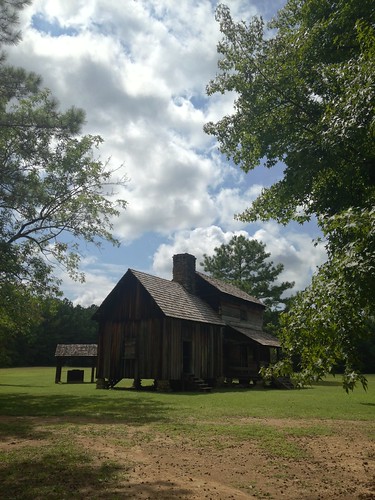
Vann Tavern was built around 1805 by James Vann. He was a wealthy Cherokee plantation owner. The Nineteenth Century tavern served travelers as restaurant, store and inn. An outside stair led to guest quarters upstairs and the window on the porch served as a ‘takeout window’ for those the innkeeper would not allow inside. Although this particular building was moved to New Echota from Forsyth County, Georgia, it is representative of the tavern that would likely have stood here.
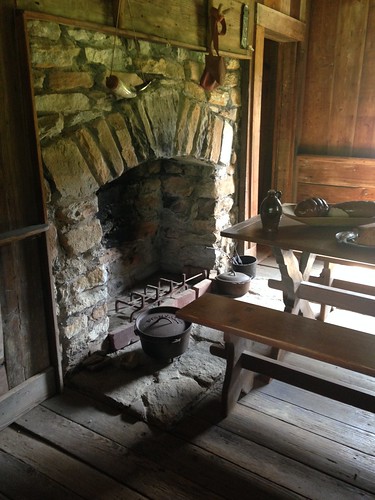
Interior of Vann Tavern.
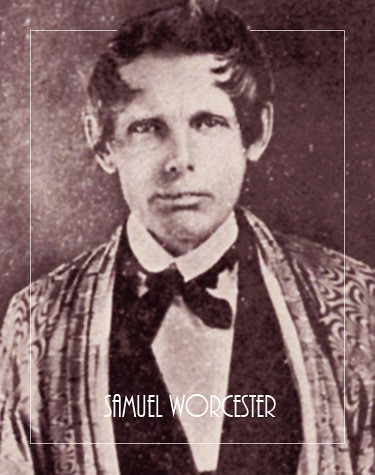
Samuel Worcester. Archives of the State of Georgia.
Samuel Worcester
A Life of Service and Sacrifice
In 1828 the Reverend Samuel A. Worcester built his home among the Cherokee at New Echota. Working with Elias Boudinot, Worcester translated parts of the Bible and many hymns into Cherokee. The press at New Echota which also produced the Phoenix printed many of these works. Worcester planted a church at New Echota and also started a school. He served as the town’s postmaster.
As the state of Georgia passed laws that were oppressive to the Cherokee Nation, Worcester refused to obtain the permit the state required for a white person to live in the Cherokee lands. In 1831 he was arrested and sent to prison by Georgia officials.
His case was appealed to the United States Supreme Court. In Worcester v. Georgia, Worcester and the Cherokees won. The state of Georgia, however, continued to annex Cherokee land. In 1832 Worcester and his family were forced from the house when a white Georgian obtained title to it in the 1832 land lottery conducted by the state.
Samuel Worcester moved to Oklahoma where he continued to serve and advocate for the Cherokee Nation. As the town of New Echota disappeared and became farmland, his house continued in use by different families until 1958 when it was restored as a historic home.
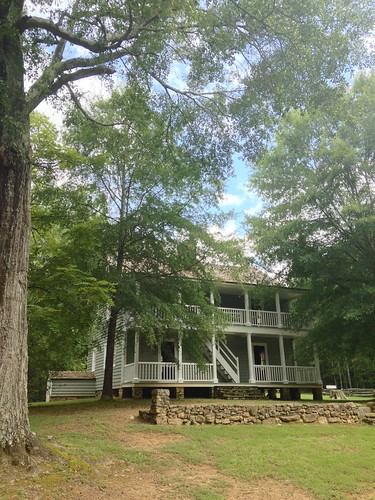
The restored home of Samuel Worcester in New Echota. Photo by Bob Kirchman.
Bears in Shenandoah Park
Ursus Americanus, Virginia's Largest Mammal

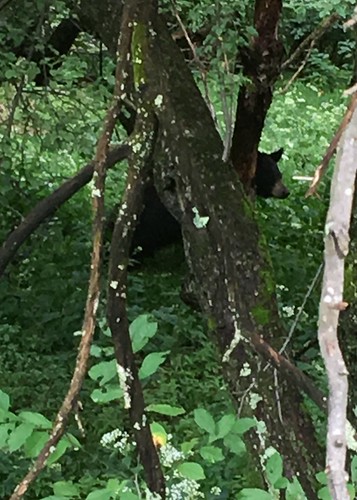
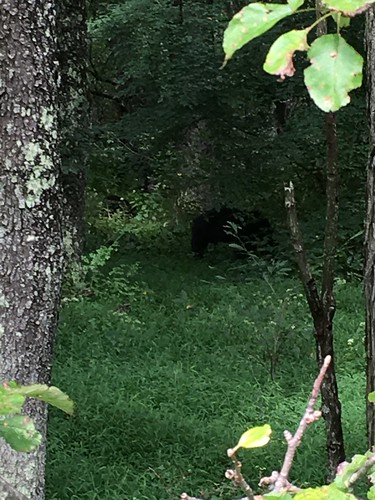

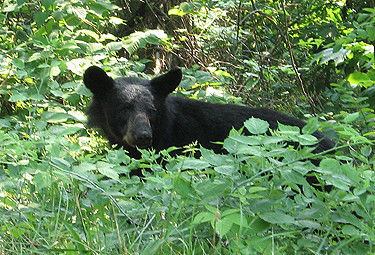


Photos by Bob Kirchman.
60 Years of NASA
[click to read]
Celebrating Where Art and Science Meet
To celebrate NASA’s 60th anniversary this year, the agency partnered with the National Symphony Orchestra to present a concert in Washington entitled “NSO Pops: Space, the Next Frontier.” NASA mission images complemented performances of space-inspired music in the Kennedy Center’s concert hall, including Claude Debussy’s “Clair de Lune” (“Moonlight”), with a video of the Moon created by NASA science visualizer Ernie Wright.
At NASA’s Goddard Space Flight Center in Greenbelt, Maryland, Wright works in the Scientific Visualization Studio, using NASA data to create accurate visuals of celestial bodies. Wright made the lunar imagery accompanying “Clair de Lune” with data from the Lunar Reconnaissance Orbiter (LRO). (read more)

LRO Photo of Earthrise over the moon. NASA Photo.
Faith and Bright Hope
A Vision for Tomorrow
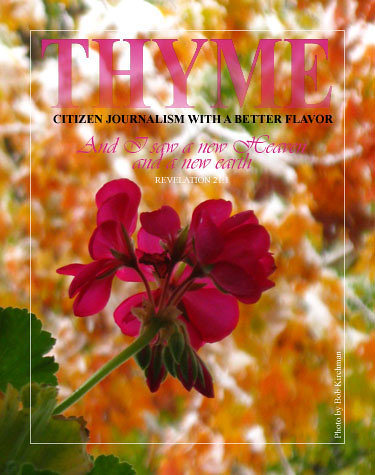
A vision for the future.
Jesus is Coming, Plant a Tree!
Therefore, my beloved brethren, be ye stedfast, unmoveable, always abounding in the work of the Lord, forasmuch as ye know that your labour is not in vain in the Lord."
-- 1 Corinthians 15:58
In a wonderful article by N. T. Wright entitled Jesus is Coming, Plant a Tree [click to read], the author writes: "For the early Christians, the resurrection of Jesus launched God’s new creation upon the world, beginning to fulfill the prayer Jesus taught his followers, that God’s kingdom would come “on earth as in heaven” (Matt. 6:10), and anticipating the “new heavens and a new earth” (Isa. 65:17, 66:22; 2 Pet. 3:13; Rev. 21:1) promised by Isaiah and again in the New Testament. From this point of view, as I have often said (though the phrase is not original to me), Heaven is undoubtedly important, but it’s not the end of the world. The early Christians were not very interested, in the way our world has been interested, in what happens to people immediately after they die. They were extremely interested in a topic many Western Christians in the last few years have forgotten about altogether, namely the final new creation, new heavens and new earth joined together, and the resurrection of the body that will create new human beings to live in that new world."
I have friends who are very much into eschatology, wonderful people, but they are pretty much convinced that this world is pretty rotten and the sooner it passes away the better. I also have friends who are very much into fixing things in the here and now, not thinking about the hereafter at all. Wright makes the case that I very much agree with: Both are missing something! He also struck a chord with me, especially in light of this dedication in my yet to be published novel: "Pontifus, The Bridge Builder's Tale:"
This little book is dedicated to those brave young people, who though I shall not name them here, will likely recognize bits of themselves in the characters I portray. I apologize beforehand for this intrusion into your privacy but feel that the world so desperately needs your story. Your very real dedication and bravery inspired this book and it cannot be written without a foundation of such truth. Most of all it is dedicated to my beautiful wife, of whom the accolade: "Well done, good and faithful servant!" is most fitting. You have stood by me in good times and bad. We have shared in the raising of some incredible young people who inhabited our own home. You have poured your love and wonder into the lives of countless students. I love you with all my being!!!
It is because we both love young people so that I write this. It is but a poor attempt to offer hope and direction to a world so devoid of it. We err, perhaps, in pointing to the hope of the hereafter without providing adequate models and renderings of that Kingdom and those who have labored to bring it into the world we inhabit now. The water that will quench the soul's thirst is dismissed because those who profess to bear it often seem, (to the society around them,) preoccupied with apocalyptic visions and derision for the world as it is now. It is not wrong to love such things, but they are not easily shared with those for whom the flower of life is yet to come. No bride-to-be, having just unwrapped her wedding planner, wants to engage in a lengthy discourse on Eschatology!
Jeremiah of old told those in exile to "Build, Plant, Marry and Have Children, Prosper and Pray!" [1.] Jeremiah 29:4-7 -- and to be sure, there are many who do. They just don't make the headlines very often. The historical references in this work, and there are probably too many, are essential to understanding how men and women have navigated dangerous times before. They are most necessary to show how one can indeed have vision for one's own times and hope in a greater, unseen reality as well."
-- Excerpt from "Pontifus, The Bridge Builder's Tale" ©Copyright, 2015, The Kirchman Studio
Referencing 1 Corinthians 15:58, Wright presents the important idea that our work here in this world is not wasted. It is incredibly important to the building of the Kingdom to come! Just as human marriage is a picture of Christ and his Church, there is much to do to point the way and give vision to the Unseen Kingdom. Wright continues: "I have no idea precisely what this means. I do not know how the painting an artist paints today in prayer and wisdom will find a place in G-d’s new world. I don’t know what musical instruments we will have to play Bach, though I’m sure Bach’s music will be there.
I don’t know how my planting a tree today will relate to the wonderful trees that will be in G-d’s recreated world. I don’t know how my work for justice for the poor, for remission of global debts, will reappear in that new world. But I know that G-d’s new world of justice and joy, of hope for the whole earth, was launched when Jesus came out of the tomb on Easter morning: I know he calls me and you to live in him and by the power of his spirit, and so to be new-creation people here and now, giving birth to signs and symbols of the kingdom on earth as in heaven.
The resurrection of Jesus and the gift of the Spirit mean that we are called to bring forth real and effective signs of G-d’s renewed creation even in the midst of the present age. Not to do so is at best to put ourselves in the position of those Second Temple Jews who believed they had to wait passively for G-d to act – when G-d has acted in Jesus to inaugurate his kingdom on earth as in heaven. At worst, not to bring forth works and signs of renewal in G-d’s creation is to collude, as gnosticism always does, with the forces of sin and death."
Revelation 19:6-9 speaks of the time when people of all nations are joined in communion with G-d:
And I heard as it were the voice of a great multitude, and as the voice of many waters, and as the voice of mighty thunderings, saying, Alleluia: for the Lord G-d omnipotent reigneth. Let us be glad and rejoice, and give honour to him: for the marriage of the Lamb is come, and his wife hath made herself ready. And to her was granted that she should be arrayed in fine linen, clean and white: for the fine linen is the righteousness of saints. And he saith unto me, Write, Blessed are they which are called unto the marriage supper of the Lamb. And he saith unto me, These are the true sayings of G-d."
In Isaiah 60 [4.] and in Revelation 21 Believers look to a New Heaven and a New Earth where a Heavenly Jerusalem descends to join the Earth. Here is a Kingdom that needs no temple, needs no sun to light it, for G-d Himself is the force that illuminates it! [5.]
And I saw a new Heaven and a new earth: for the first Heaven and the first earth were passed away; and there was no more sea. And I John saw the holy city, new Jerusalem, coming down from G-d out of heaven, prepared as a bride adorned for her husband. And I heard a great voice out of heaven saying, Behold, the tabernacle of G-d is with men, and he will dwell with them, and they shall be his people, and G-d himself shall be with them, and be their G-d." -- Revelation 21:1-3


Journey to Jesus, a mural depicting the nations coming to Jesus in the New Heaven and New Earth described in Revelation 21. Mural by Kristina Elaine Greer and Bob Kirchman
Journey to Jesus [click to view larger images].
Our Christian hope is that we're going to live with Christ in a new Earth, where there is not only no more death, but where life is what it was always meant to be." -- Timothy Keller.
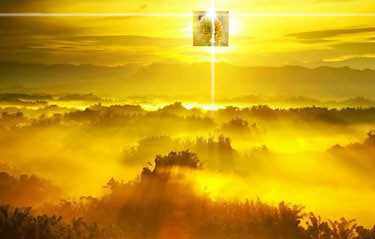
The hope of Heaven and New Earth.
A Lesson from the Missionaries
Wes Stafford, founder of Compassion International, remembers with great joy the times he and his missionary father dug wells together. He happily recalls the tired, sweaty, muddy process of ensuring clean water for the villages in Africa that they served. Father and son came home tired and filthy and the people saw a beautiful illustration of the love of G-d! Clean wells, fenced off so that cattle could not foul them, meant healthy children instead of sickly ones. Lives were saved and the people, through that expression of love, were moved to trust in Christ!
The Staffords excitedly sent photographs of the whole operation, dirty faces and all. They surely would be an exciting part of the mission's newsletter. To their dismay, when the newsletter arrived, there were no pictures of the well digging. It wasn't about 'salvation' in the eyes of the mission board. Yet it had resulted in real salvation (earthly as well as Heavenly) to the villagers! Years later, as head of Compassion International, Wes Stafford still presides over the digging of a lot of wells!
Tragically, the board's earthward myopia extended to the boarding school for missionary kids that Wes and his sister attended. Those who washed out as missionaries were assigned to teach at the school. Not seeing the school as an important work of G-d, the children were poorly cared for, sometimes even abused, and the faith of many was destroyed. In his book: Too Small to Ignore, [2.] Stafford makes the case that the work of teaching and caring for children is paramount in the work of the Kingdom of G-d.
Passing the Torch
Perhaps the greatest lesson Stafford's father ever taught was in the digging of the wells. Wes grew up with practical experience in participating in the building of the Kingdom. That lesson would stick with him as he grew to head Compassion International. There is a poem by Gary Snyder: Axe Handles [click to read] which captures the Sacred process quite nicely:
I am an axe And my son a handle, soon
To be shaping again, model
And tool, craft of culture,
How we go on."
How are we doing as teachers. Not very well, I fear. As we are all too eager to see this world pass away, our young adults busy themselves with apocalyptic video games. The sad truth is that both generations have lost the mandate to build the Kingdom. A little child, it turns out, will teach me a "more excellent way." We are outside her house together... initially we set out to dig in the snow. Perhaps we'll build a snowman.
But we notice the chaos of snow and ice on the path to the trash cans. I chip, she digs. We create a beautiful clear walk for the neighbors. Then we clear off some sidewalk. The young child is clearly enjoying the whole process. But my adult mind soon grows restless that we have not built the snowman! Funny, how the adult mind can be distracted so easily!
It is only later that I realize that the child has been the teacher that day. We created a small patch of beauty (and safety) for her neighbors. She indeed saw that such labor was a good thing. No pontification, just a simple model, simply followed. We were making something together! Didn't Jesus say that: "the kingdom of God belongs to such as these!" -- Luke 18:16
The Fragrance of Eden
Wisdom from an Old Rebbe
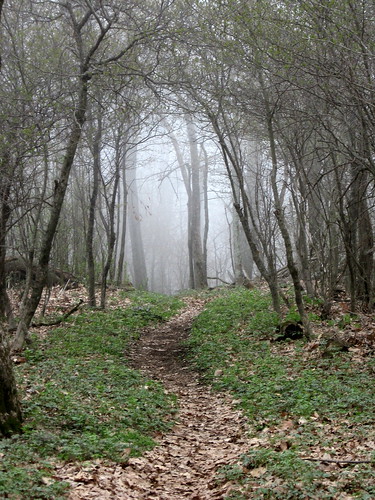
In the Blue Ridge Mountains.
Here is a Beautiful Story [click to read] of an old Rebbe who's devotion to G-d's work of redemption shaped the way he lived his own life. The wise man was told one day that the Messiah had come and was in the steet outside. The man opened the window, sniffed the air outside and declared the so-called 'Messiah' a fraud. His instincts told him the coming Messiah would bring with him the sweet fragrance of Eden, the fragrance of the divine presence in the tabernacle and the temple, that was lost when the Glory departed.
Years later, the Rebbe's son wondered why his father had to go to the window to sniff the air. Surely the sweet smell of redemption would come into the house. His son then realized that the father had lived his life in devotion to torah study and the expectancy of Messiah's coming. His life, so lived, gave his own dwelling place the fragrance of what he hoped for. Thus it was necessary for him to smell the air outside his house to know if what he hoped for had truly appeared.
May our faith and devotion create such an aroma in our own dwelling places!
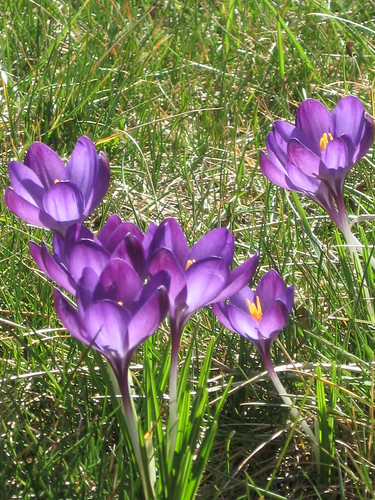
Spring Crocus
